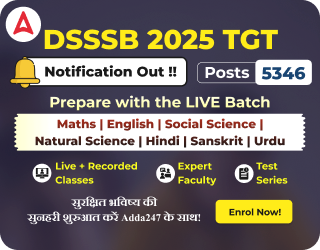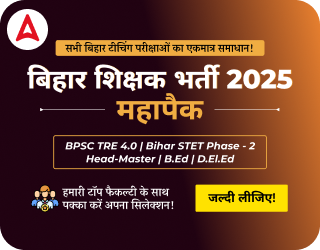Table of Contents
The UP LT Grade Biology Syllabus 2025 has been officially released, and it’s a must-read for every aspirant preparing for this highly competitive teaching recruitment exam. Whether you’re appearing for the first time or returning with more focus, knowing the exact syllabus gives you a clear direction. It’s not just about what to study, but how to approach your preparation smartly.
To succeed UP LT Grade Exam, you must align your preparation with the official syllabus and exam pattern. Let’s dive deep into the UP LT Grade Biology Syllabus 2025 and help you download the official PDF version for structured prep.
UP LT Grade Biology Syllabus 2025
Understanding the UP LT Grade Biology Syllabus isn’t optional; it’s essential. It lays out what will be asked in the exam, the scope of each subject, and helps you prioritize high-weightage topics. Without clarity on the syllabus, candidates often waste time on irrelevant areas or miss important ones. With both Zoology and Botany covered, this syllabus offers a balanced challenge for every biology graduate aiming for the LT Grade Teacher post in Uttar Pradesh. The detailed LT Grade syllabus acts as your study blueprint, letting you:
- Identify high-scoring topics
- Plan revision schedules effectively
- Avoid unnecessary topics
- Build confidence with targeted preparation
UP LT Grade Biology Exam Pattern 2025
The UP LT Grade Teacher Exam 2025 will be held in two stages: Prelims and Mains. In the following section, candidates will find detailed exam patterns for both Prelims and Mains Exams.
UP LT Grade Prelims Exam Pattern 2025
| Exam Pattern for UP LT Grade Prelims Exam | |
| Exam Name | UP LT Grade Teacher |
| Question Paper | One (Objective Type) |
| Total Questions | 150 (30 General Studies + 120 Main/Optional Subject) |
| Optional Subject | Biology |
| Total Marks | 300 (Each question carries 2 marks) |
| Duration | 2 hours |
| Negative Marking | Yes, 0.33 marks are deducted for each wrong answer. |
| Qualifying Marks | 35% for SC/ST and 40% for others |
Note: If multiple answers are selected, it’s treated as wrong even if one is correct. No penalty for unattempted questions.
UP LT Grade Mains Exam Pattern 2025
| Exam Pattern for Mains Exam | |
| Eligibility | Only candidates who qualify for the Preliminary Exam |
| Question Paper | One (Descriptive/Conventional Type) |
| Total Questions | 20 Questions (Divided into 2 sections) |
| Section A | 10 Short Answer Questions (125 words each, 8 marks each) = 80 marks |
| Section B | 10 Long Answer Questions (200 words each, 12 marks each) = 120 marks |
| Total Marks | 200 |
| Duration | 3 hours |
| Compulsory Questions | All questions are mandatory |
| Qualifying Marks | 35% for SC/ST and 40% for others |
UP LT Grade Biology Syllabus 2025: Complete Breakdown
Here’s a subject-wise overview of what you need to cover while preparing for UP LT Grade Biology. Mainly, aspirants need to study Zoology and Botany to cover the Biology Syllabus for UP LT Grade Exam.
UP LT Grade Biology Syllabus for Zoology
| UP LT Grade Syllabus for Zoology | |
| Classification & General Characteristics |
|
| Representative Organisms & Life Cycles |
|
| Applied Zoology Topics |
|
| Cell Biology & Genetics |
|
| Evolution & Ecology |
|
| Human Physiology (Basic Knowledge) |
|
| Biochemistry |
|
| Embryology |
|
UP LT Grade Biology Syllabus for Botany
| UP LT Grade Syllabus for Botany | |
| Microbiology & Lower Plants |
|
| Taxonomy of Angiosperms |
|
| Anatomy |
|
| Economic Botany |
|
| Embryology |
|
| Cytogenetics |
|
| Plant Physiology |
|
| Biochemistry |
|
| Ecology & Environment |
|
| Plant Pathology |
|
| Molecular Biology & Biotechnology |
|
UP LT Grade Biology Syllabus PDF
For candidates who prefer structured revision, the UP LT Grade Biology Syllabus 2025 PDF is available for download. It contains the entire syllabus for both Botany and Zoology sections in an easy-to-read format.
Click Here to Download the Official UP LT Grade Biology Syllabus PDF




 KVS PGT Geography Syllabus 2025 and Exam...
KVS PGT Geography Syllabus 2025 and Exam...
 KVS PGT Syllabus 2025, Download PGT Syll...
KVS PGT Syllabus 2025, Download PGT Syll...
 KVS Syllabus 2025 For PRT, TGT, PGT and ...
KVS Syllabus 2025 For PRT, TGT, PGT and ...












